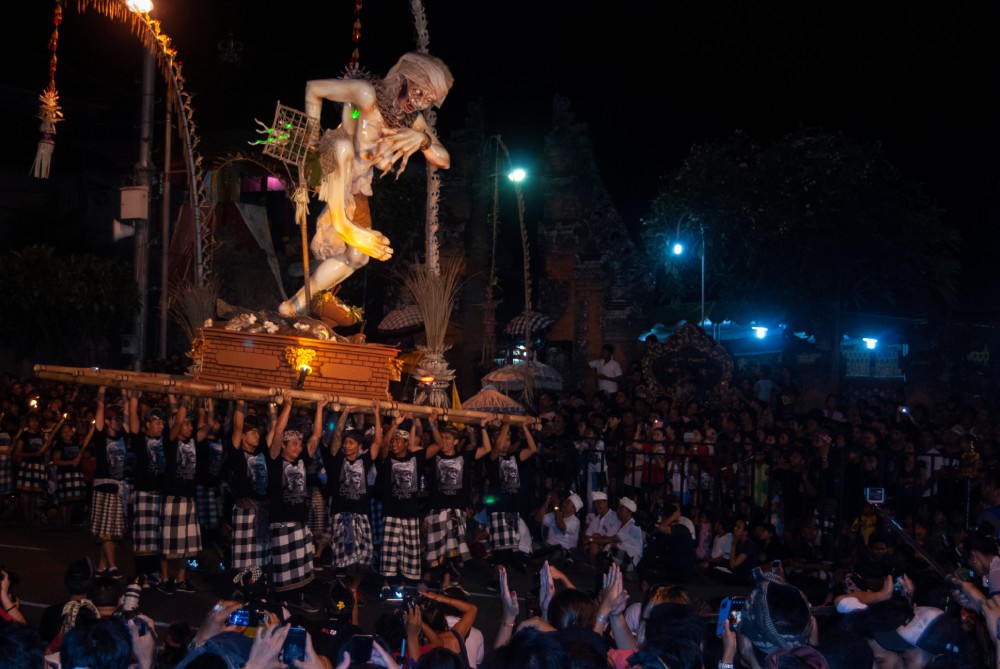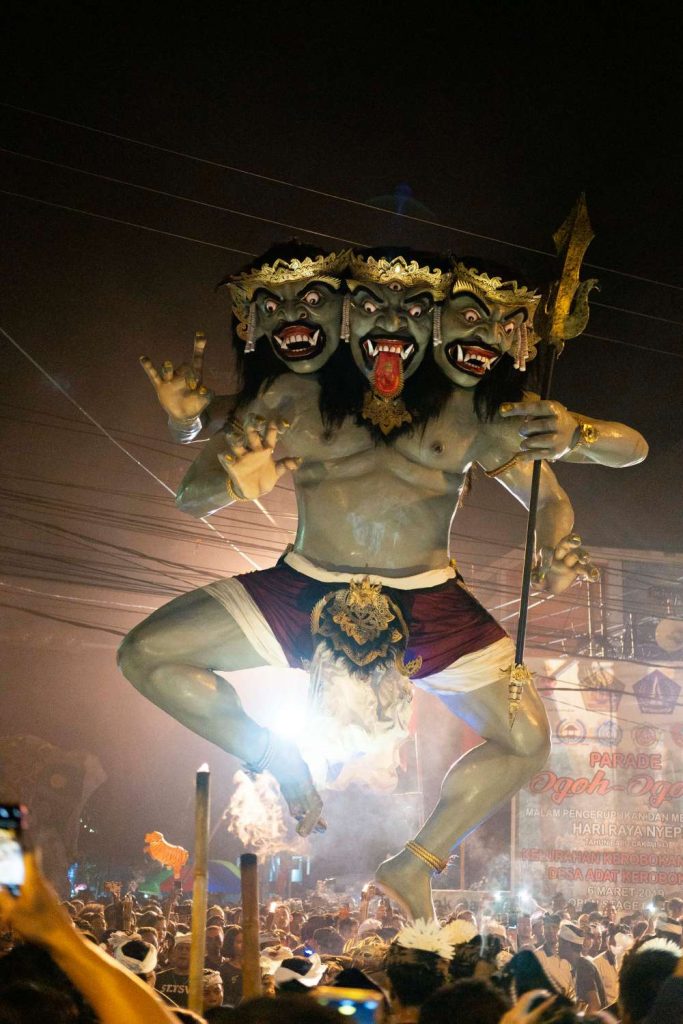
On the eve of Nyepi, Bali’s Day of Silence, the island is in a boisterous and lively state as people celebrate the Ngrupuk Parade. This ritual of sorts sees the parading of the ogoh-ogoh, gigantic and vibrant effigies depicting demons, beasts and ghastly characters (bhuta kala) of Balinese and Hindu folklore. These ogoh-ogoh are made by the Balinese youth across a majority of the island’s regions and villages, in creative competition to create the most impressive (or indeed hideous) statue in their area. That is, all except one village: Desa Adat Renon.
In the centre of Denpasar city is one banjar (community hamlet) by the name of Desa Adat Renon, or Renon Traditional Village, that does not participate in the creation of ogoh-ogoh. The story stems back to the beginnings of the ogoh-ogoh parades, which in fact started — in its current form — only back in 1983. A couple of years of this new tradition had passed when in 1985 the residents of Desa Adat Renon experienced highly disturbing and discomforting incidents in the lead-up to the parade.

Having proudly finished their demonic effigies for the year, all of a sudden strange things began to happen: their demon effigies began to move by themselves, shaking at their pedestals, some reported hair-raising screeches and even cries coming from nearby ogoh-ogoh. Adding to that, havoc took place at the pura dalem, the death or cremation temple, where the resident deity (Ida Sesuhunan) refused to be returned or ‘closed’ (nyineb), resulting in many trances and possessions. It was a warning, and the village administrators understood — one having heard a ‘whisper from above’ (pawisik) — that the parade must not go forward for the safety of the community. The creation and parading of ogoh-ogoh have been banned ever since.
An attempt to revive it took place in 1996, whereby a local resident felt enough time had passed and the village community agreed to try. To their dismay, mystical events returned very quickly into their ogoh-ogoh-making process, starting with the sudden appearance of black and white snakes (poleng) around the effigies, and the resident in charge of the revival experienced many trances. The warning from the local deity was not to be questioned, and the parade was once again called off — this time, for good.






